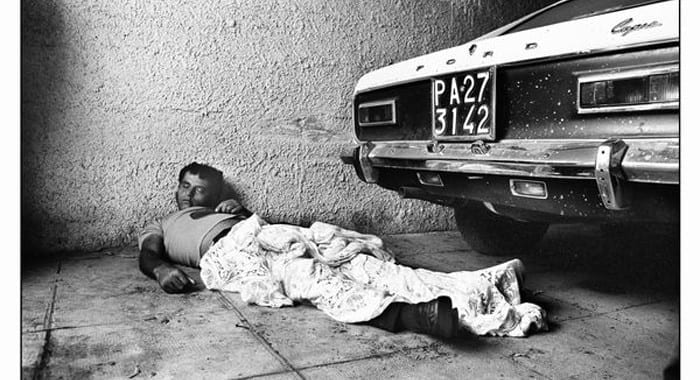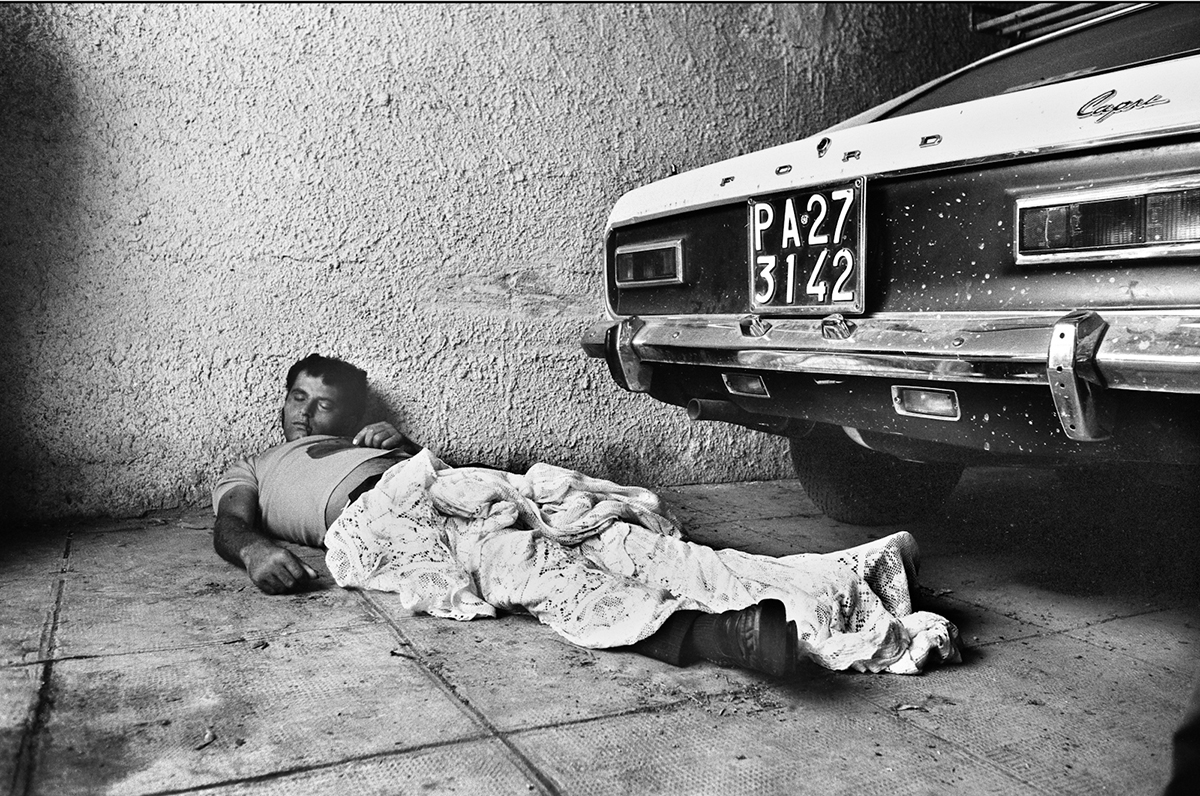“To start, not all of the pictures that a photographer makes are important.”
Photography as Art: The Involvement of the Photographer with His/Her Subject and Photography as Historical Evidence
Transcribed February 9, 2001
Translated for ASX by Osvaldo Sanviti, 2013
Life goes on before us in a continuous flow. To freeze a fragment in an image gives us the ability to stop time and look at what happened then, here and now. The famous photographer Henri Cartier Bresson wrote: “Of all the means of expression, photography is the only one that sets a decisive moment. For us photographers, what disappears, disappears forever. Hence our anguish, but also the essential uniqueness of our work.” When it was discovered, photography was claimed by some artists to be an accurate instrument of representation, a true reflection of reality, yet mechanical. Soon it was recognized that photography, a vision of one eye passed to a thousand eyes, is an interpretation and therefore, like all forms of artistic representation, an expression. The photographer always transfigures what he sees, even when its purpose is to witness. In the past century’s reportage the greatest photographers were those ones who set out through their gesture to show the reality of war or have caught a glimpse of poverty or love. An eye focused through the camera lens at a given time expresses more than the eye we use as we distractedly walk. Only when photography provides witness through expression can it become a form of art. But how does the photographic representation of reality in combining beauty and a story, create truth?
STUDENT: What are the most fascinating aspects of this profession and why you have chosen the profession of photo reporter versus the different ways of doing photography?
LETIZIA BATTAGLIA: To begin with I chose to do the work of photographer to earn economic freedom. Just for that. The love affair, the passion, the interest for this work came later. I started as a photographer for need. I love being a photographer, I love photographers and I love photography. The most fascinating part of my work is that I can take the world everywhere I am, I carry it there in that little piece of film, and then I take it with me, the event, the story, the person. I make sure that the life of the image can continue, whether it was immortalized ten years ago or a day ago. I have the document in my hands. It’s something exciting, something that makes me rich, something which makes me less fragile in relation to my being a woman, to my being a person.

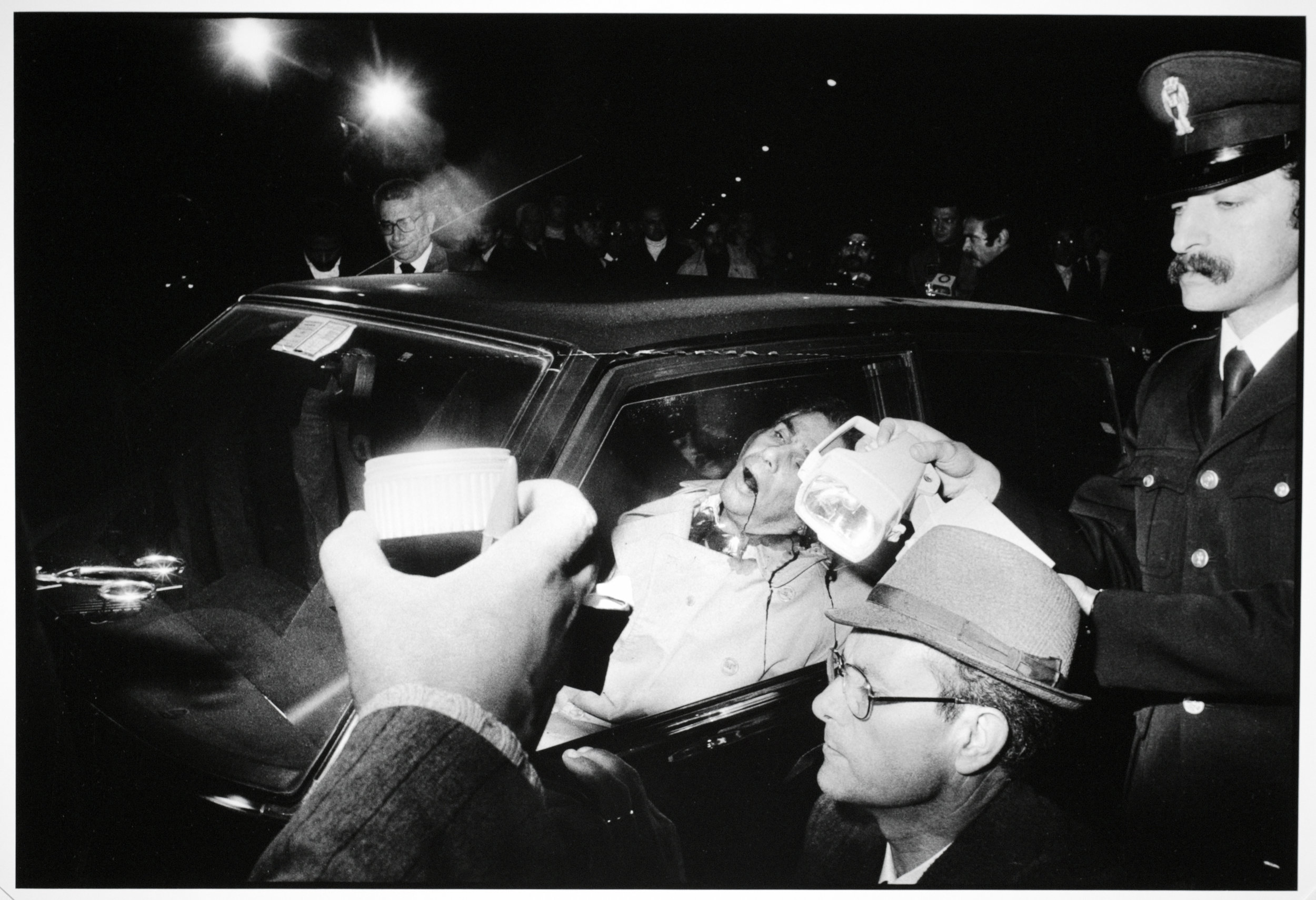

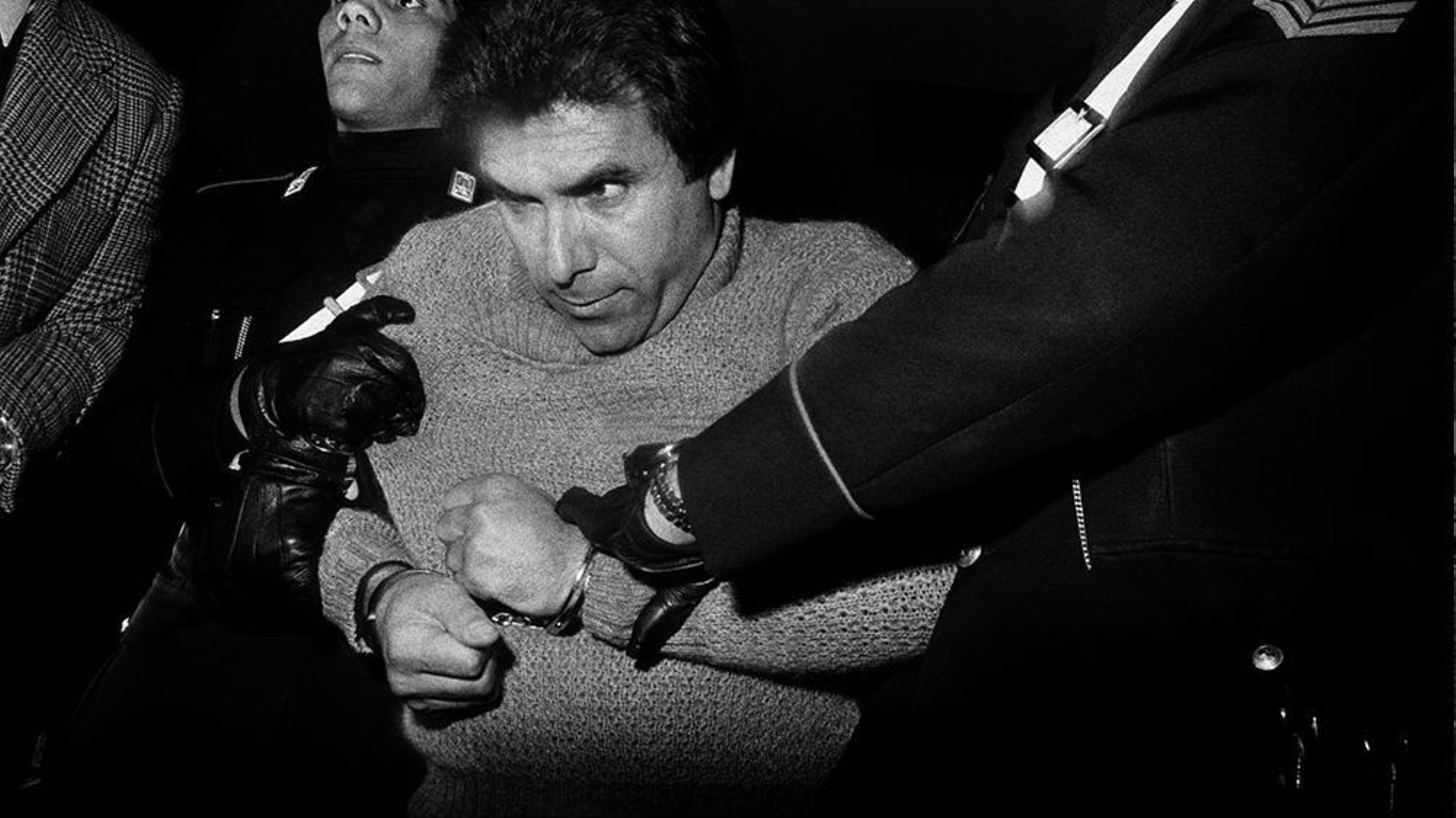
STUDENT: How can photography, which is the representation of an instant, of a decisive moment, be able also to represent longer time intervals, succeeding to go beyond the category of the temporary?
BATTAGLIA: To answer your question I would begin from farther away. To start, not all of the pictures that a photographer makes are important. To be able to make a good photograph, you can work six months, a year, and have nothing and then maybe, in one day you can make two that are very good. When you take a photo, so many things come to your aid: experience, culture, attention, love, passion, the compassion one feels or falling in love which you may have already at that time for that thing you are shooting. Then follows another stage, which is the moment of choice, when you decide to choose from the various pictures you have taken on an occasion or in a year or in a day. The photographer chooses a picture. He says to himself: “This is the right one. It represents me, and it represents what I saw.” What fascinates me about photography? That when a photographer has worked so hard – and I look at his/her photograph – I recognize him/her. I immediately recognize if it is Cartier-Bresson or Tina Modotti or other photographers, because we enter into a symbiosis with the camera, with the film, with the acid, with time, with the mistakes of other professionals. But you enter inside it fully, to tell something, to speak. Then additionally, that photo can become something that is able to witness, to document, to tell a time what was.

1982, Palermo – Triple homicide.

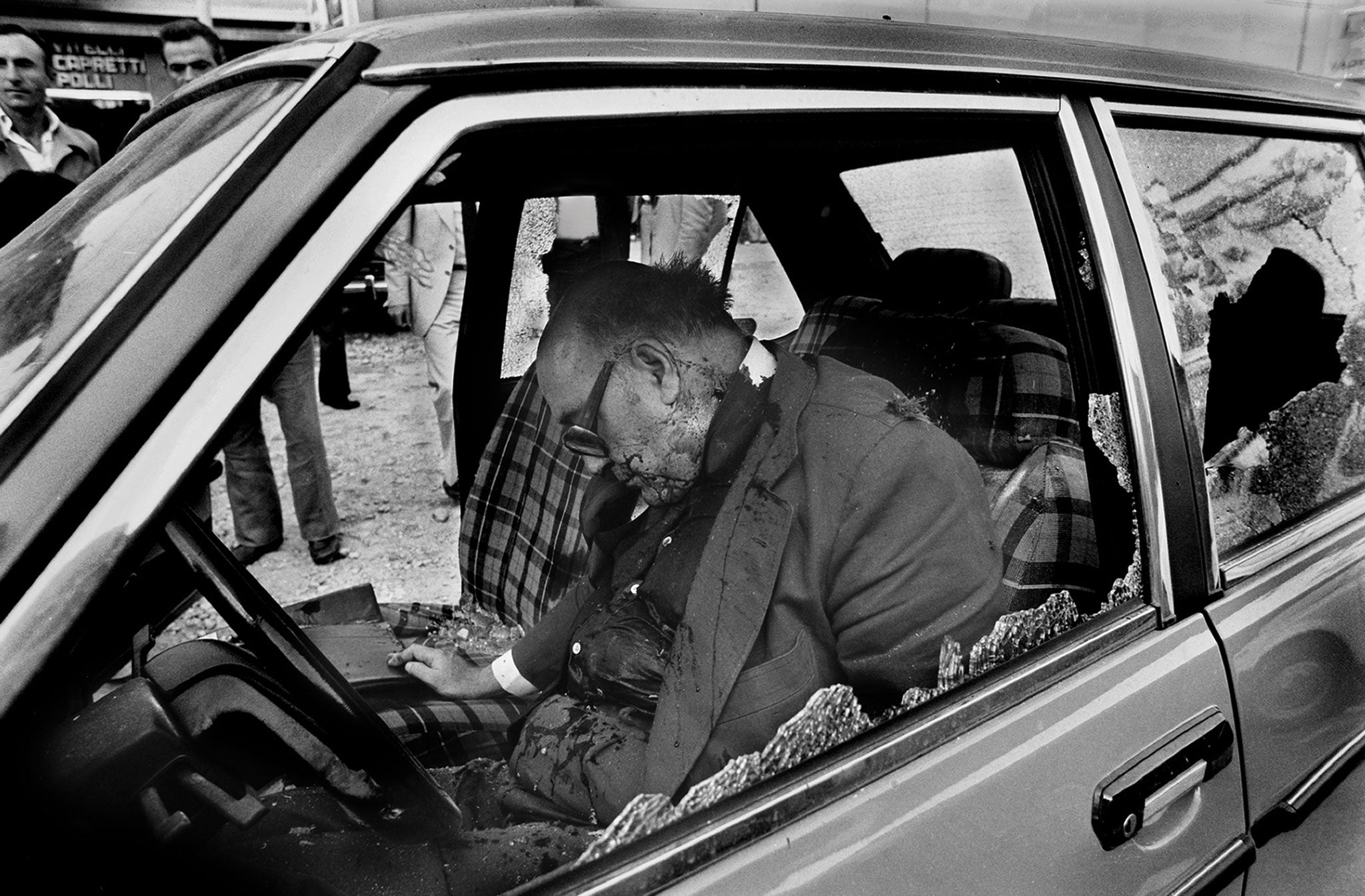
“I worked for a newspaper called L’Ora, a newspaper that has had many misadventures, because of its militancy against the most brutal things of Mafia – takes a lot of patience, and patience implies calm and I personally have not had much time to tell calmly.”
STUDENT: About this, I wanted to ask: we know that photography is much more than just a mechanical snap. In particular, what kind of emotional relationship, of involvement, do you establish with the object to be photographed?
BATTAGLIA: I am one of those photographers who often makes a mistake with the exposure – in short, I have little to do with the technique – so I am careful. I take a picture of a person if, and only if, I like that person. After which, that picture will also tell a little bit about myself. For example, I mainly don’t take pictures of men. I apologize to men, I just don’t photograph them often, they don’t come out as well. I photograph more women, because in women I find myself, in a ten years old girl I find myself when I was ten, I see my dreams, my future, a future that I wanted at all costs, wonderful, the fulfillment of all my desires, a desire to be loved, to love, to have, to build a life. That’s why I am very involved with what I do when I photograph. But because I get involved a lot, from an emotional point of view, in my work, I often make mistakes. I miss the exposure, I miss the framing. After which what remains is still the pictures to tell a fact, my encounter with that situation. Even if I photograph a tree with the landscape, I choose it, photographed in that way, perhaps its purpose was to tell my sadness or my desire for peace, or joy. Do you understand? So there is always an emotional relationship in what I do. I hate, sorry, the photographer who immediately thinks to: double page, this on the insert of La Repubblica (italian newspaper – translator’s note), or on Life Magazine! This picture in a double page! This is the cover, so I do it vertically! I hate all these mechanical ways to make a career. At the same time, this doesn’t mean that it is false that the photographer has to make a living. That’s why an important purpose of this profession is to be able to sell your photographs and so to be present, to exhibit in a museum, to accomplish solo exhibitions, this is all, also significant. But, the moment when you shoot, it has to be emotional and naked. This means that that person, that context, that scene, that object, they are to be found natural and naked, as well as a tree, a flower, a baby.



STUDENT: I’d like to ask you: how does a simple photo shoot become art? When does a photograph becomes a fine art photography?
BATTAGLIA: Great question! It is often said, for art in general, that if a bottle of milk enters into a museum, it immediately becomes a work of art. Because, you know, contemporary art uses different means to express itself and, often, not all are expressed through the paintbrush, etc. We are talking about a new context where many things are mixed. When does photography becomes art? Certainly, when I started and I worked for many years as a photographer I did not work with some intention to express a form of art. I did not think to make art because I had a huge urgency. I live in Sicily, a land where we had terrible years, bloody years, of pain, of anger, of protest, of people who have risen up and of people who have been crushed. In those years, my work was to record. I recorded. While I was earning a living as a photographer I recorded what was happening. In those years art was a luxury I could not afford. Then it happened that some photographs were considered good by other photographers too. They were considered “good”, “artistic”, I don’t know… and I don’t know really! On the other hand there are in the world some amateur photographers who shoot great pictures. I don’t know when photography becomes art. Certainly behind his activity must be a thought. A good photograph that tells a “beautiful” thing is not art. The beautiful child who looks at you with dreamy eyes or the wonderful girl with hair in the wind, that’s not art. Most likely art must have behind it a thought, that thought does not necessarily have to be political, but a thought that has to represent an idea related to the time in which we are living, the time of pollution, of cars, a time when there are poor, too much poor, and there are rich, too much rich. Do you understand? A photo must have a thought behind it, it also can be an ephemeral thought, but it still must possess thought to become art. Of course art can be the ephemeral also, photographs with the clear intention to tell the ephemeral. All this is very complicated to explain because I’m not an art critic, but I love contemporary art and photographers very much. In particular I like very much women photographers and, even more, the work of American photographers. In United States there is a girl, for example, a photographer called Nan Goldin. She was your age when she started taking pictures of friends. Because she had some punk friends, a little smashed, drug addicts, desperate, for years she took pictures that did not need any audience. She was a very poor girl, then someone has saw these photographs and said: “But these are photos that no one else could have done, because she, Nan Goldin, was inside the world she described.” She was there while two kids loved each other, while they were quarreling, while they were in the bathroom. She was taking pictures everywhere. Today the Whitney Museum of American Art, a museum of American contemporary art in New York, a beautiful museum with many solo photography exhibitions, realized an exhibition of a portfolio of her photographs. Nan Goldin sells a lot today, after having been poor for all his life. This is because she told, and she did very well, from the inside, without knowing anything about history of photography, of art, of composition, all those concrete situations. Goldin did not know anything about critique. Her nam is Nan Goldin, and that’s it. If you happen to be in a bookstore, in a gallery, look for her books. Everyone a little bit smashed, boys with hair a little painted here, a little painted there, red, green, punches in the eyes, girls “against”… in short, she is a woman who has well documented the photographic research on the world that she wanted to tell. Today a photograph of her sells a lot, and with “a lot” I mean millions. Think about it: Goldin did not want to make art. But today it is art, because it is inside a museum.
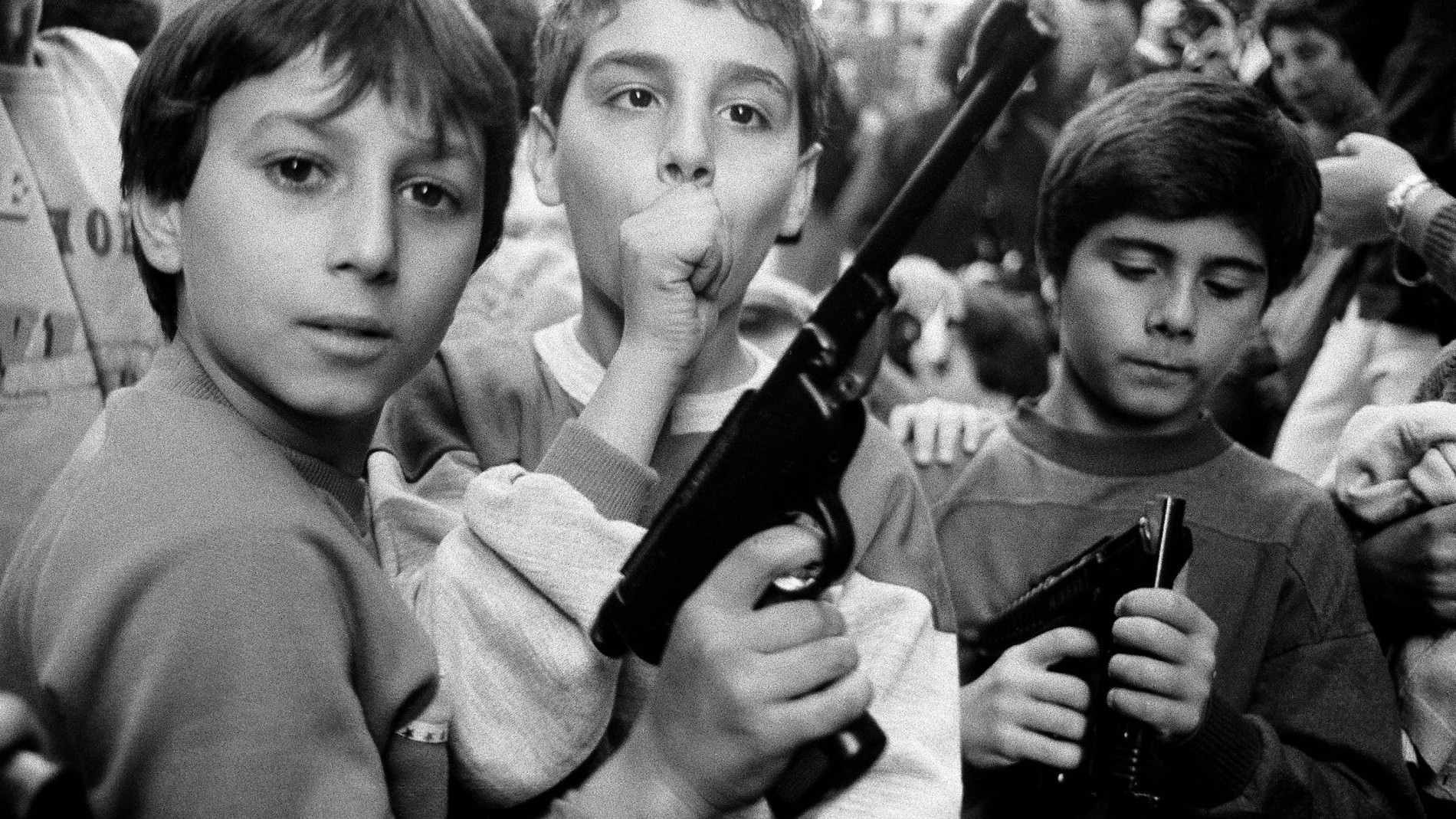


STUDENT: Do you think it is more difficult to capture the momentary expression of a person in a photograph or make expressive an inanimate object?
BATTAGLIA: I cannot theorize. I generally photograph people, I love to photograph people and to approach them much. For this reason I use a wide-angle, which is a lens that does not take a view of fifty millimeters, but it is, nonetheless, a particular lens. Because the picture is good, you need to be very close. I photograph very close, sometimes it may happens that I take a punch. Actually I have never taken a real punch, but often something similar has happened because when I work I have to approach a lot. I like the frame where the subject is framed by close. But for some time I feel the need to photograph not so much objects but rather landscapes, as if I were looking for a landscape of the soul, perhaps of my soul, of the things that I still have not been able to say. I am known as a photographer of reportage. I know very well that to do a reportage – and I had to do it because I was in Sicily, I worked for a newspaper called L’Ora, a newspaper that has had many misadventures, because of its militancy against the most brutal things of Mafia – takes a lot of patience, and patience implies calm and I personally have not had much time to tell calmly. This is my project for the future: a landscape, but with a little human being inside. At the same time I need, a huge need, for open spaces, just because I was very close to the people, and the people, in order to be captured in a lens, needs large open spaces.
STUDENT: I would like to ask you a question, maybe you should give more answers about the ethics of the photographer and how it is to deal with the ethics of the subject. In the situation of a subject with emotional impact, a corpse, does it affect you? Does it exploit the subject simply by photographing it? How do you think the audience should react to the choice of this subject over another to show current problems?
BATTAGLIA: So, let’s look at a common situation: let’s say that you work for a newspaper – be it La Repubblica, Il Corriere della Sera, or Il Manifesto, or L’Ora. The editor of the newspaper sends you on the scene of a crime by giving strict orders: “Go to photograph what happened”. You go, you arrive on the site, you immediately get nausea (I remember, as far as I’m concerned, that the smell of blood has not abandoned me ever since the first time I found it in front of me), you find a poor human being tortured, humiliated, violence cut short his life and, nevertheless, you have to photograph it. Why should you? Because this is not just about the dead in question! You as a photographer should photograph this and more, you should photograph the poverty, the pain, the rich and the poor and to tell all this to the world. The world must know the reality. Of course, the person in question, the dead can not defend themselves from your lens! This is true. But it is true that this image, the image of a mangled corpse, maybe it will tell of a time when men were barbarians, one story among many that will serve history. And is it right, then, to photograph a child who dies of hunger, with skin that falls from the body? That’s right, because the world must know. The tragic thing is that then the world will get used to seeing these images, with millions of people intent on eating spaghetti while the television broadcasts this. This is the other side of the coin. What to do because people get desensitized? I do not know. I just know that the photographer has to photograph. But I must also say that ethics can not be related only to the issue of a corpse. Ethics is constantly in relation to how you approach, how to tell things. If in a single photo you can not tell your respect, your anger for the things you’re photographing at that time, in a single published photo, you can not tell who you are and why you are doing this, then, in a set of photographs, when you stop for a moment, after ten years of work, and you show, not just the dead man killed, but also show the face of those who are responsible, then you understand. You can use the camera as – I do not like the word, because I am a pacifist – but you can use it as a weapon, a weapon by the side of those you love, of those who are, I do not want to be rhetorical, but by the part of those who have little.
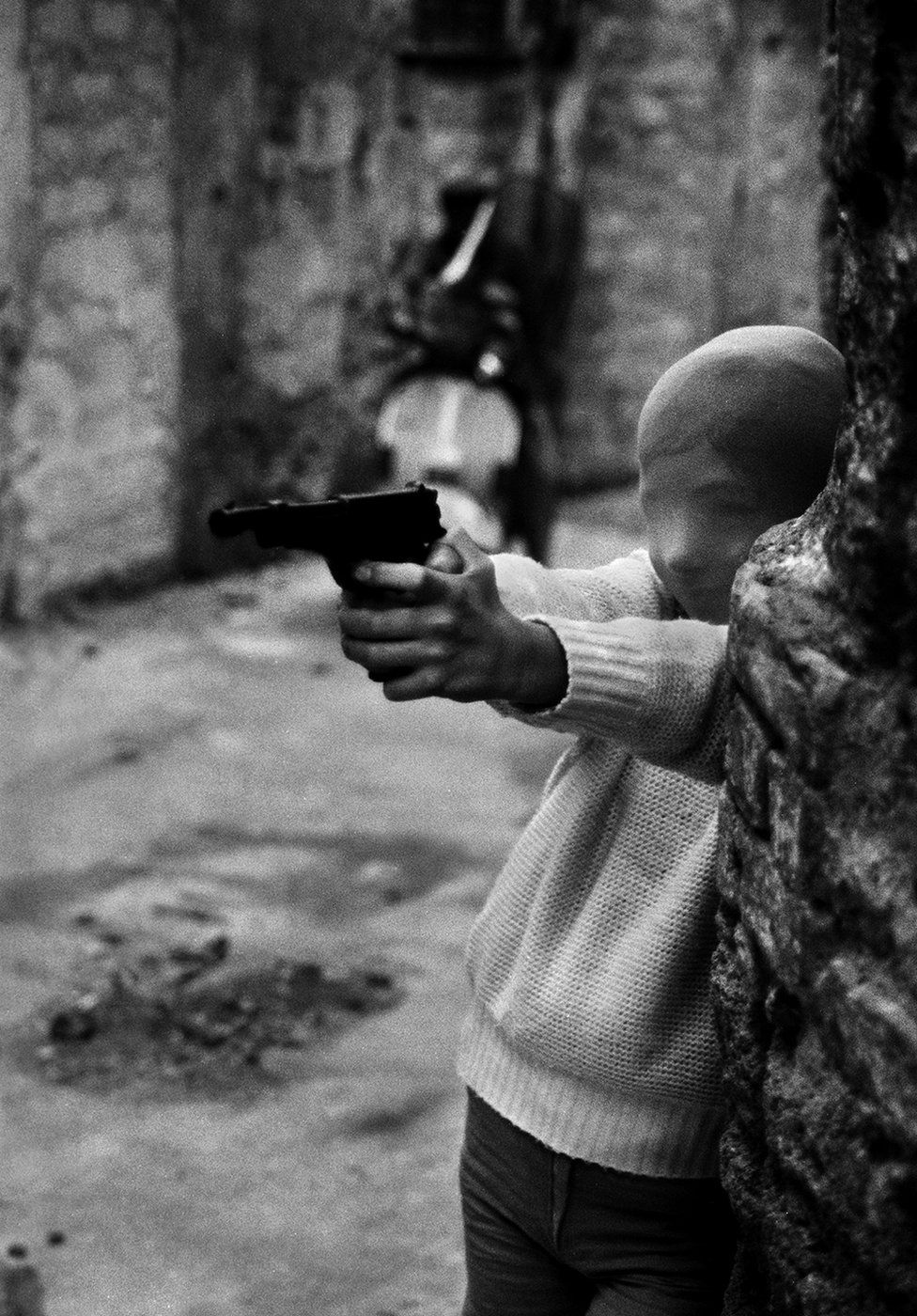
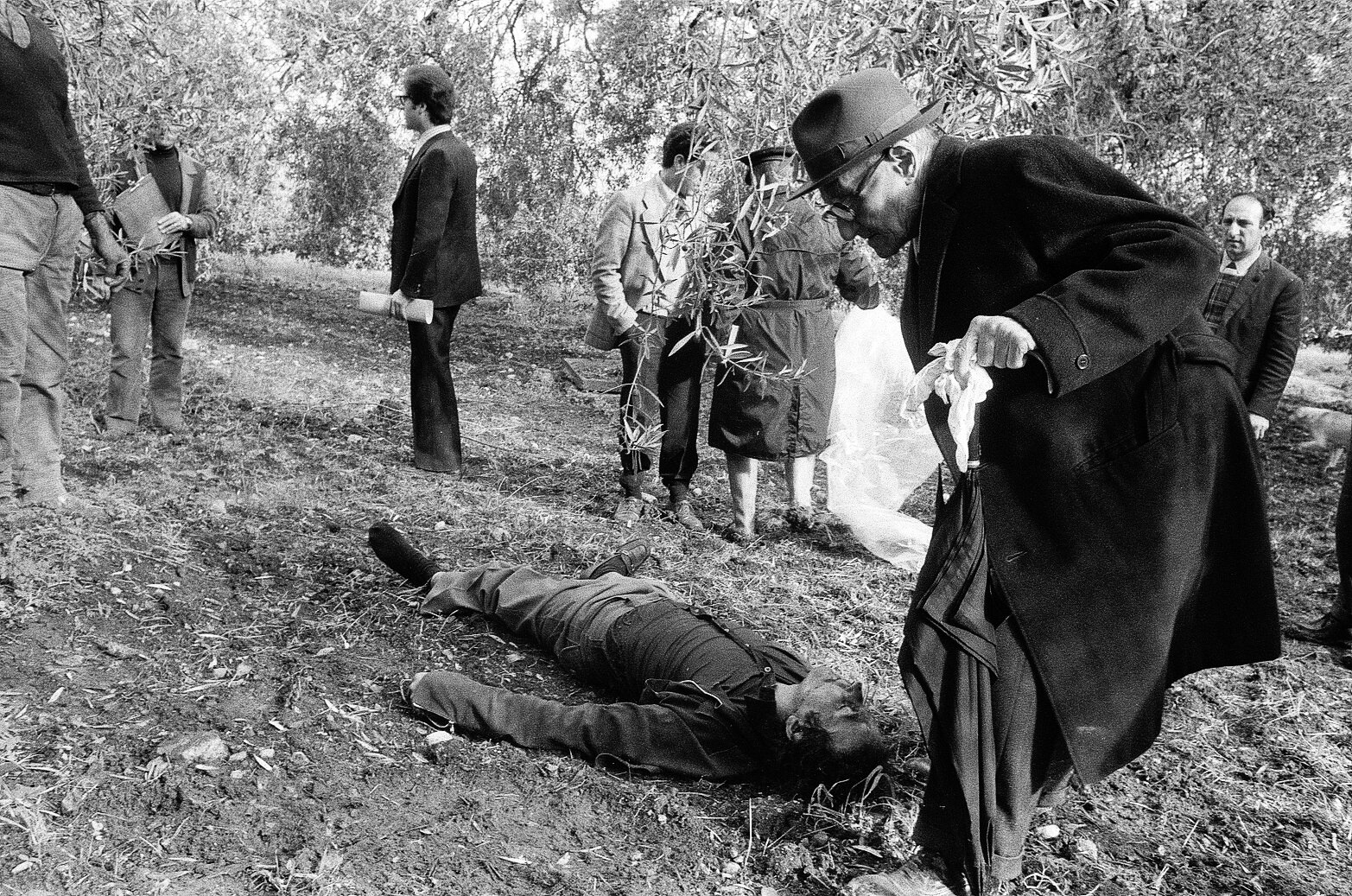
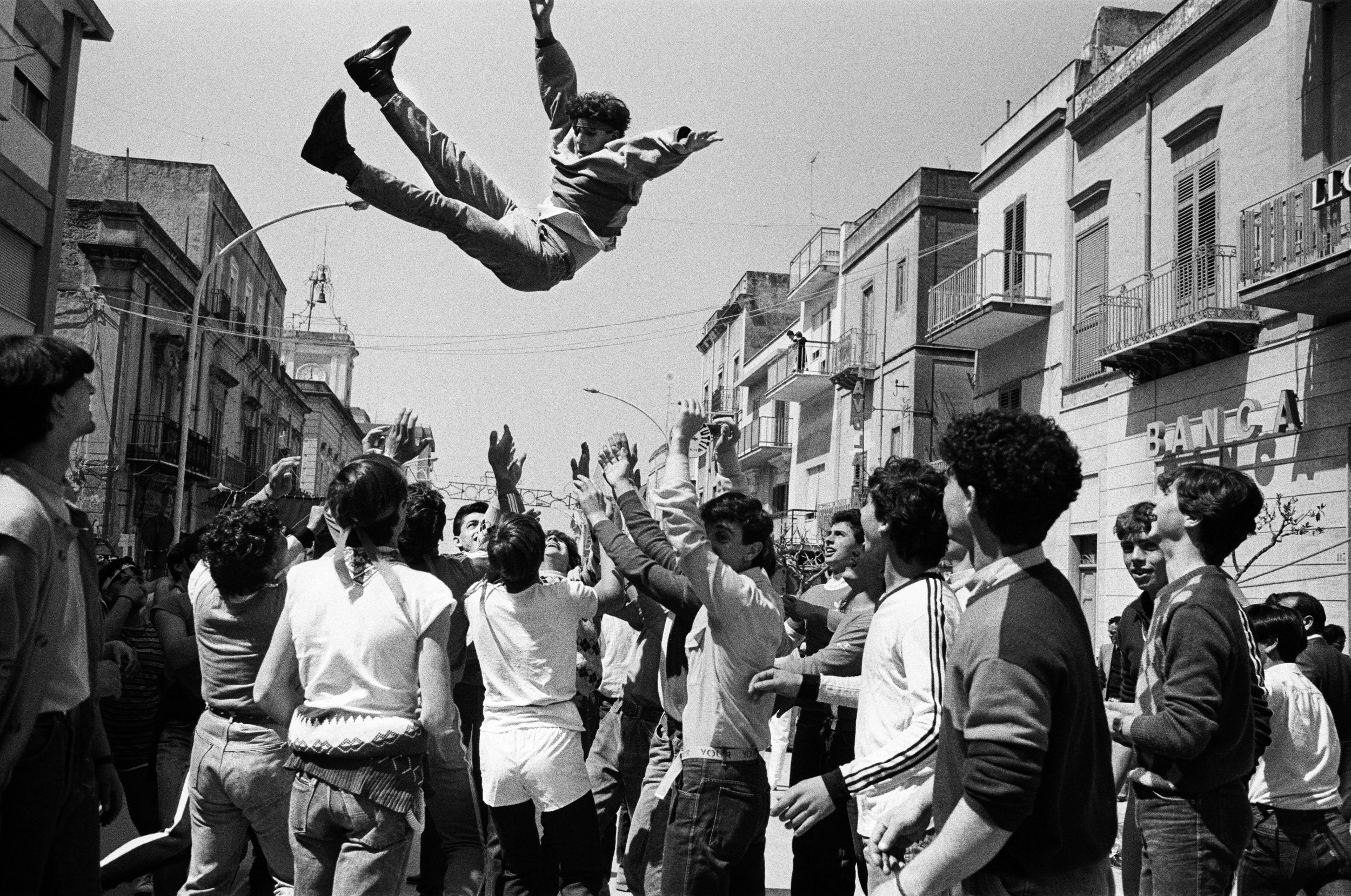
STUDENT: I would like to speak with you about photography as a means of complaint. What is it?
BATTAGLIA: Photography can be many things. It can be a simple portrait, that you do of a young lady, with a string of pearls, elegant, who wants to remember in this way when she’ll be eighty – she’ll remember when she was forty. It can be this, it can be complaint, it can be document, it can be art, “art” in quotation marks. It can be many things, it can also be scandal. There are many photographers who earn well, they do scoops, waiting to photograph a famous actress with her lover. This interests me not so much. I don’t want to stand to lose my life, hours, waiting. The photo of Jacqueline Kennedy with naked breasts, I think it took the photographer six months of stalking, always perched – because then they earn a lot, because there is the stupidity of the market, that a scoop is paid three hundred million liras. But there are always poor photographers. Actually, the photographers are generally poor, because it costs a lot to photograph. Cameras break, films cost as much. I don’t know which of you photograph, but it costs so much. Newspapers have very, very little attention to the real work of photographers. One of you could go to India, take fifty beautiful photographs, they look at them in a moment: “Thank you then we will call you back” because they have interests in other things. They have other interests because if you put a nude on the cover or the actress, it works and they sell much more. So photography can also be used for foolishness. I’m not a moralist, indeed I am very open and tolerant. Photography is something wonderful, exceptional, and personally it gave me back life. In the time of my life that I began to photograph, I became a woman and more sure of myself. At least I was not desperately insecure. Anyway, for me it was photography that gave me strength and energy.
STUDENT: Can photography have a value as historical evidence? Can it represent an entire society?
BATTAGLIA: History tells us that photographs may have a historical testimony, Robert Capa’s photographs are testimony. I don’t know if you are aware about the great photographers. Tina Modotti told some things. Photography, even authorless, can have a great testimony, it can tell important things to remember in the future. A photo can be a very important ethical moment, later, because it makes you remember certain things and it documents them.
STUDENT: Letizia, according to you, is it more important what it is represented in a picture, or the way we represent it?
BATTAGLIA: The way is more important because, as I said before, the beautiful girl – she is beautiful, the dress is beautiful, the flowers around her are beautiful, the scenery behind is beautiful – that does not make a beautiful photograph. It is the composition, it is that something that you can grasp in that moment. The meaning that comes when something is a little more shifted to the right or left. Do you understand? There is something that you put into it that makes the picture different from beauty itself, even if you want to photograph a fashion, you can take pictures that say more, that say how stupid they are. Do you understand? So what’s inside is how you tell it. For example, I tell you: once in Palermo someone told us of a child suffering from heart – then the child died, they were poor. I went with Franco Zecchin, another photographer. We went in the same house. There was a woman, we knew right away she was an alcoholic, she was beautiful, but a desperate beauty, poor, thin, with kids around her, one mentally disabled. And next to her was a man with a menacing face, her husband. It was a situation where she was afraid that he would beat her, the child suffering from heart problems, she an alcoholic. A terrible situation. Well, I took a picture, a simple, not great picture, but she had a tear here. Franco Zecchin, the other photographer, took a picture of the whole scene that was actually comical. It was the situation that came out, because there was the baby, in a particular pose with everyone else. Franco Zecchin, from the same situation, drew a topic, not just of satire, but that one made smile, it was misery that made the viewer smile. I look for the essential, and perhaps a little more banal, I pulled out the portrait of this woman with tears. So there is a way, there are various ways of being in front of the life. If all of you had a little camera in his hand, and we went, I do not know, on the waterfront, you would do a different picture, of course, from the angle. Each of you go for an hour on the waterfront, alone, by this meter to this meter: “Do what you want.” Surely everyone will do what he likes the best, what strikes him most. It is clear that we also learn to express ourselves. You can’t make nice pictures immediately. They can be pretty in a banal way, but it takes a little time to be able to feel happy. But actually we never feel happy, we never feel satisfied with the photographs we make. At the moment, you say, “I could do more, I could do more”. Then, later, after ten years, you say, “But look, I never printed this picture”. Because we make contact sheets, you know, the negatives, then you make the contact sheets, so you have lots of small photos that you can watch without print all of them, because otherwise it would be very expensive. After so many years you look at that contact sheet and say “But I do not have that picture printed. Why?” You reprint it and you find it again.
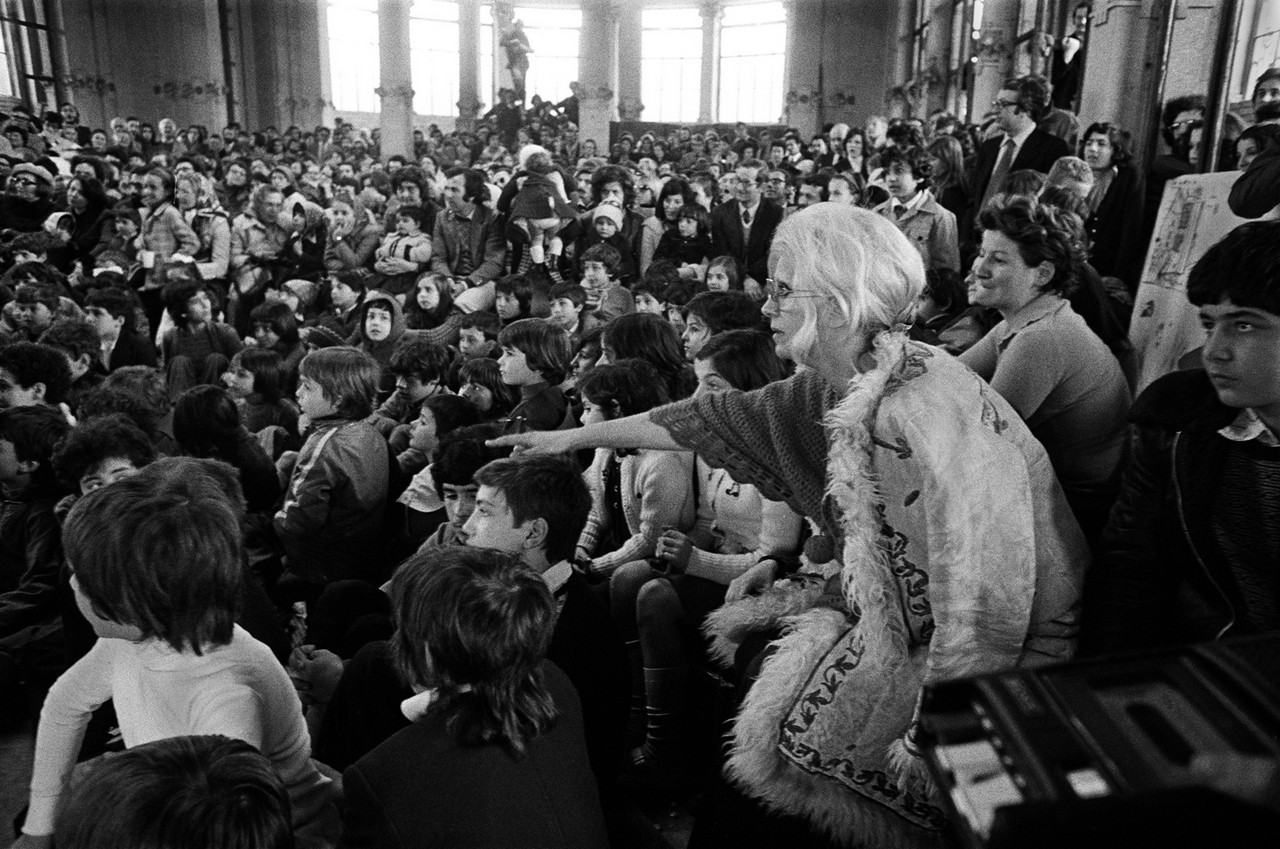
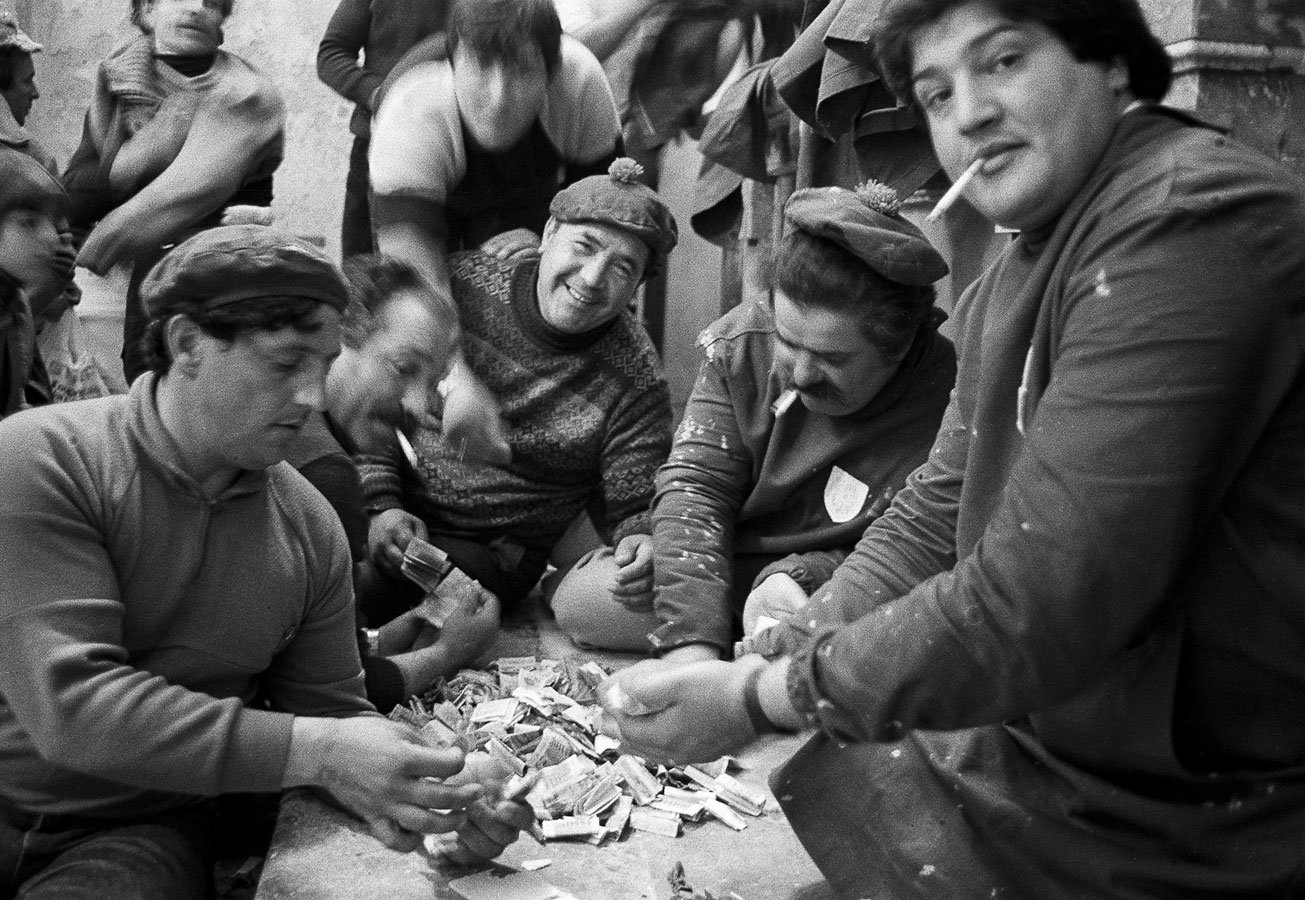

STUDENT: What is the difference between traditional photography, on film, and digital photography.
BATTAGLIA: Meanwhile, first of all I say that I have always spoken, although I did not say here, about photographs in black and white, because I do not know the language of color photography. And I think that color photography still doesn’t have a true language. But perhaps this really related to me personally, because I have not had a great experience. You were asking me about digital photography. Let’s start from the fact that you can take good photos with cameras that cost ten thousand liras or fifty liras, it doesn’t matter. You can take good photos with horrible film, as did Josef Koudelka, which is considered one of the greatest photographers in the world, he photographed in Prague, the arrival of the Russians in Prague, with a motion picture film, because he didn’t have photographic film. And he took pictures that have remained in history. So, you can shoot without having a telephoto lens, short lens, long lens, very long. Here you can take good photos with the traditional camera. Poor, rich. The important thing is that you put heart and head together and legs to walk. The digital camera is not there yet with a certain kind of quality, grain, emotion. But it is certain that you have to experience it, because as we go toward the use of these cameras, it’s definitely easier. But I’m fond of film, of the old camera, my old Leica M2, forty years of life. The digital camera makes me a little scared. But I am also afraid of the washing machine, the modern ones, so I’m scared of the techniques. I don’t know. You can do beautiful things with a needle and thread. You can make beautiful things with everything. Digital and non-digital.
STUDENT: Getting back also what you said before, what do you think of the great photographers doing commercial work such very famous calendars?
BATTAGLIA: I can’t criticize the photographers. I could criticize the whole society, for buying the calendars. Ok, do they earn money? In life you can be a dealer or someone who wants more. Make calendars. But I don’t want to despise. There are also beautiful pictures, sometimes they’re stupid and all are boring and all… I do not know. However, what can I say? Can I speak ill of my fellow photographers? Sometimes there are stupid things, stupid things happen. But also because there is a market unfortunately. Just they make calendars, they sell them immediately. Those guys need to pay the rent, the photographers, they need to buy cameras. And surely these photographers have some nice photos somewhere else.
Recorded February 9, 2001
(All rights reserved. Images @ Letizia Battaglia)
